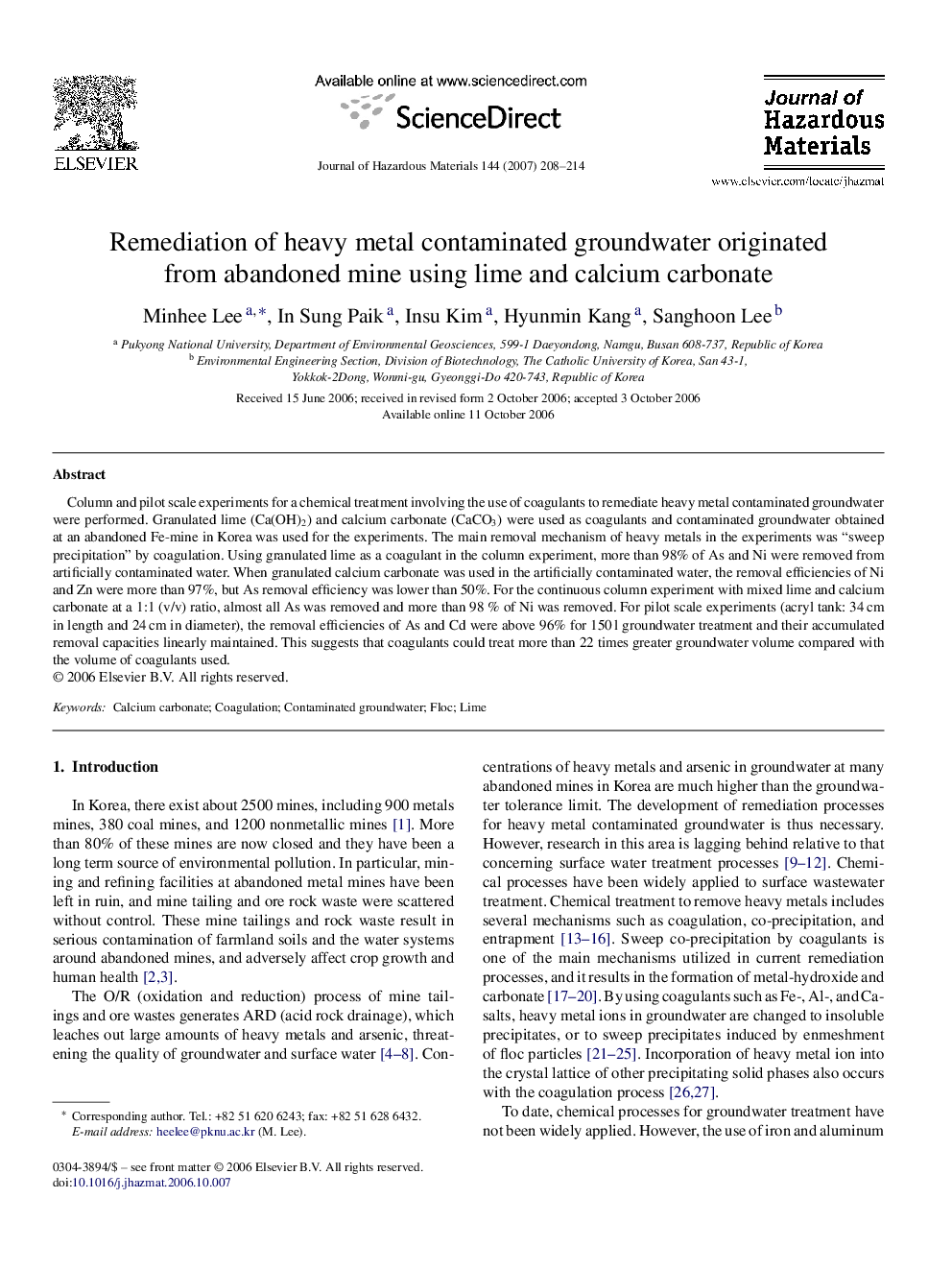| Article ID | Journal | Published Year | Pages | File Type |
|---|---|---|---|---|
| 584462 | Journal of Hazardous Materials | 2007 | 7 Pages |
Abstract
Column and pilot scale experiments for a chemical treatment involving the use of coagulants to remediate heavy metal contaminated groundwater were performed. Granulated lime (Ca(OH)2) and calcium carbonate (CaCO3) were used as coagulants and contaminated groundwater obtained at an abandoned Fe-mine in Korea was used for the experiments. The main removal mechanism of heavy metals in the experiments was “sweep precipitation” by coagulation. Using granulated lime as a coagulant in the column experiment, more than 98% of As and Ni were removed from artificially contaminated water. When granulated calcium carbonate was used in the artificially contaminated water, the removal efficiencies of Ni and Zn were more than 97%, but As removal efficiency was lower than 50%. For the continuous column experiment with mixed lime and calcium carbonate at a 1:1 (v/v) ratio, almost all As was removed and more than 98 % of Ni was removed. For pilot scale experiments (acryl tank: 34Â cm in length and 24Â cm in diameter), the removal efficiencies of As and Cd were above 96% for 150Â l groundwater treatment and their accumulated removal capacities linearly maintained. This suggests that coagulants could treat more than 22 times greater groundwater volume compared with the volume of coagulants used.
Related Topics
Physical Sciences and Engineering
Chemical Engineering
Chemical Health and Safety
Authors
Minhee Lee, In Sung Paik, Insu Kim, Hyunmin Kang, Sanghoon Lee,
